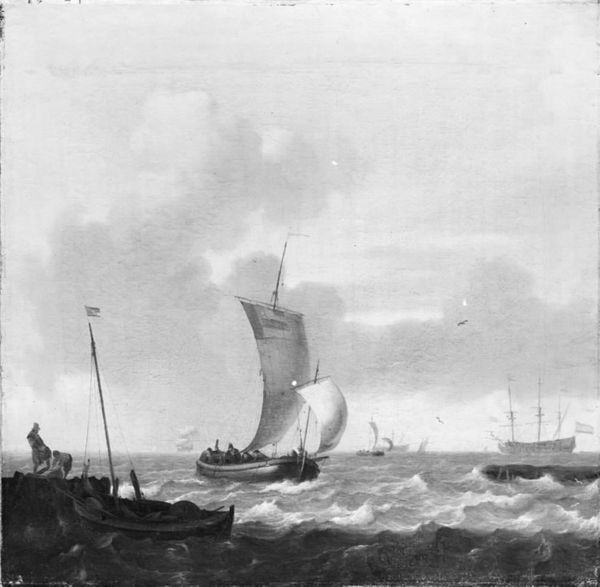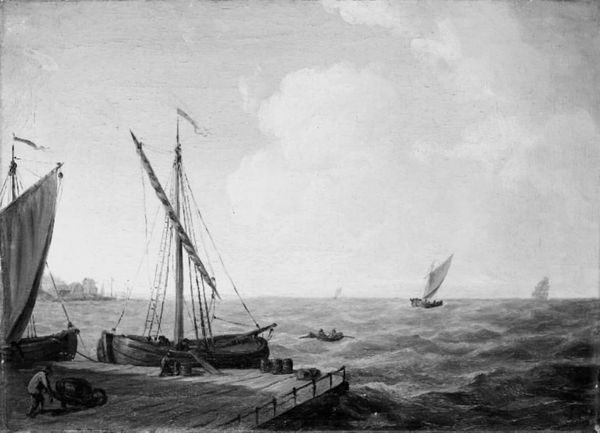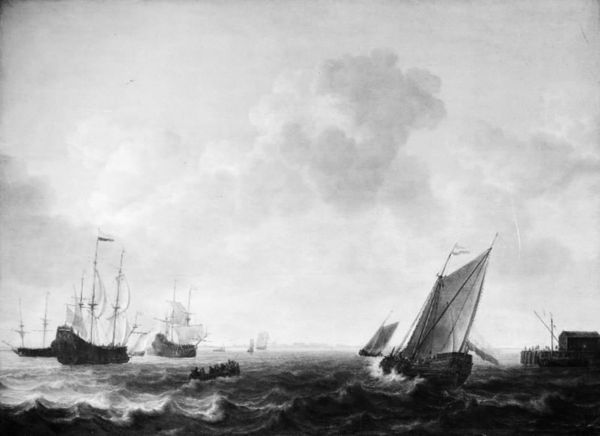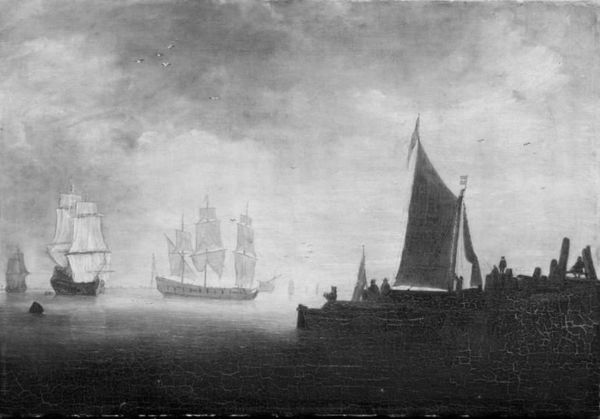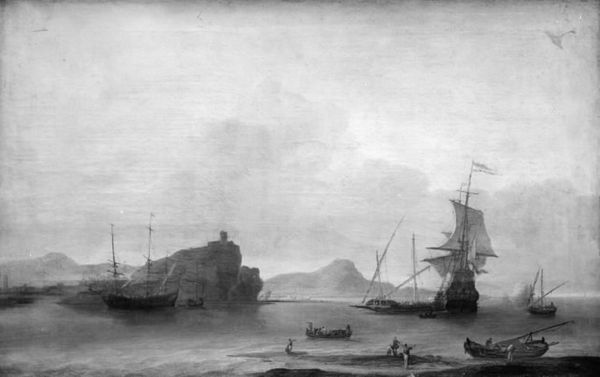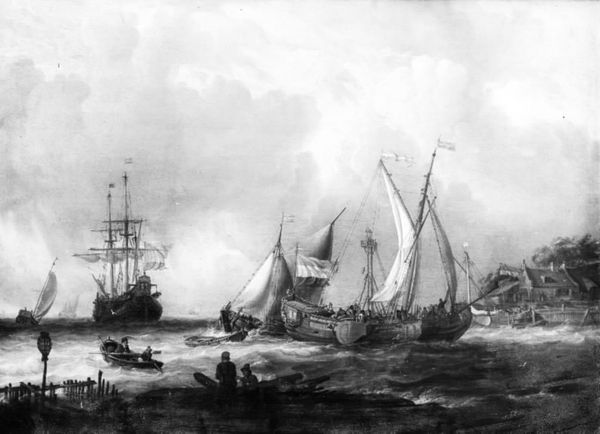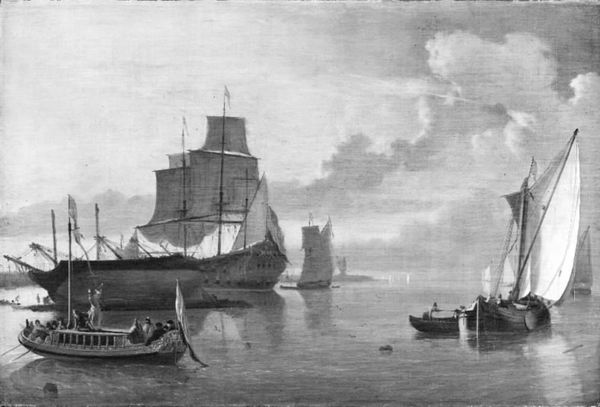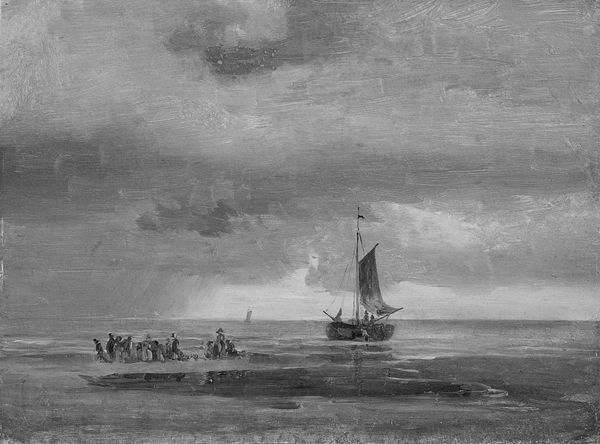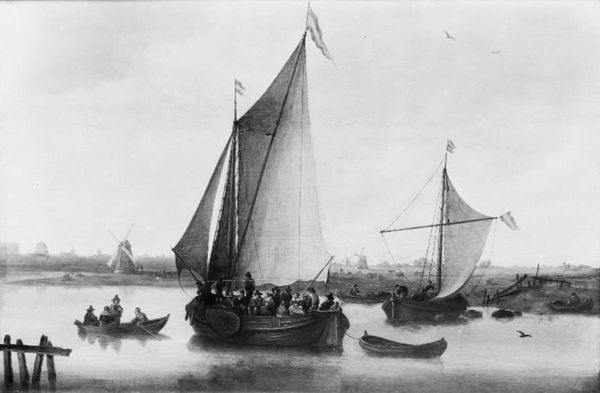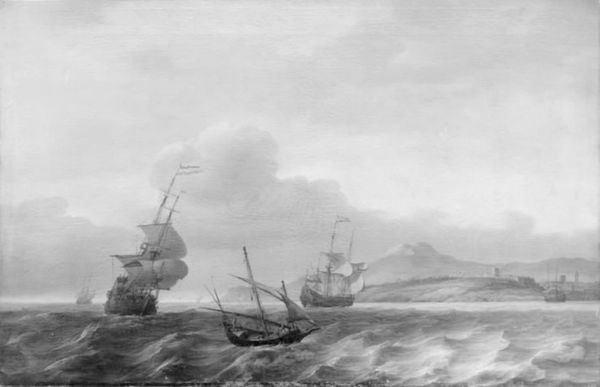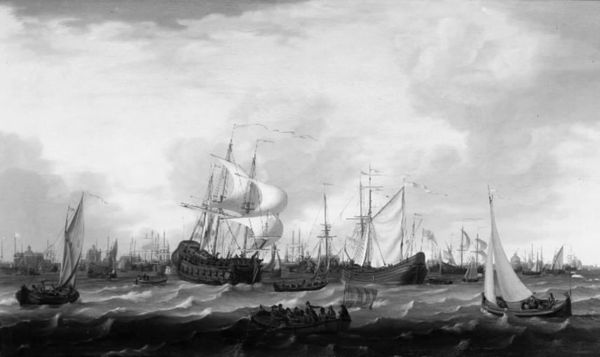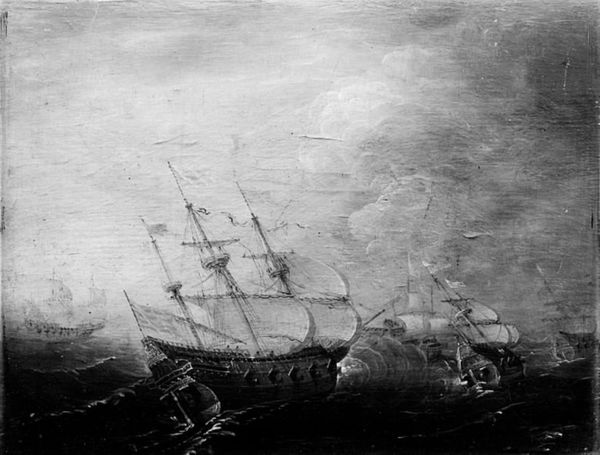
painting, oil-paint, canvas, wood
#
baroque
#
dutch-golden-age
#
painting
#
oil-paint
#
landscape
#
canvas
#
wood
#
cityscape
#
realism
Dimensions: 42 cm (height) x 61 cm (width) (Netto)
Curator: Ah, here we are in front of "Morning," a serene seascape rendered in oil on canvas by Ludolf Bakhuizen, sometime between 1646 and 1708. Editor: Immediately, it strikes me as almost monochromatic. Shades of gray dance with subtle hints of dawn. It feels…liminal, that point just before the day truly awakens. Curator: Bakhuizen was a master of Dutch Golden Age painting, known for his remarkable ability to capture the drama and poetry of the sea. Think about the merchant fleet as symbols of Dutch pride, or as a mirror reflecting something elemental in us… Editor: Definitely the mercantile aspect stands out; however, the overall composition speaks of transition. It feels significant that the city in the background appears more implied than real. Bakhuizen uses a clever iconography to represent commerce as something secondary. Curator: Fascinating! I agree, but it could also signal a very knowing approach on the artist's part. By softening the details of the background metropolis he directs our attention to the main subject—an embrace of sea navigation and appreciation for the landscape in its purest essence. Editor: Look at the placement and significance of that prominent boat at the center: its large white sail seems illuminated, but also symbolic; a sort of angel wing over the city… or perhaps the soul of the vessel navigating through life? Curator: You're diving deep! Though I tend to think more in terms of skillful draftsmanship when appreciating Dutch art of the period, I’ll concede that every detail serves some emotional or expressive purpose here. And I like what you're saying—it’s more than just water and sky; it carries the weight of a cultural narrative. Editor: In our culture of digital overstimulation, "Morning" offers a respite. Its restrained palette encourages introspection and symbolizes nature's calming persistence. Curator: Indeed. As a whole, the scene represents a nation’s reach… but more fundamentally, a meditation on time and timelessness, light and shadow, impermanence and a promise of new beginnings.
Comments
No comments
Be the first to comment and join the conversation on the ultimate creative platform.
